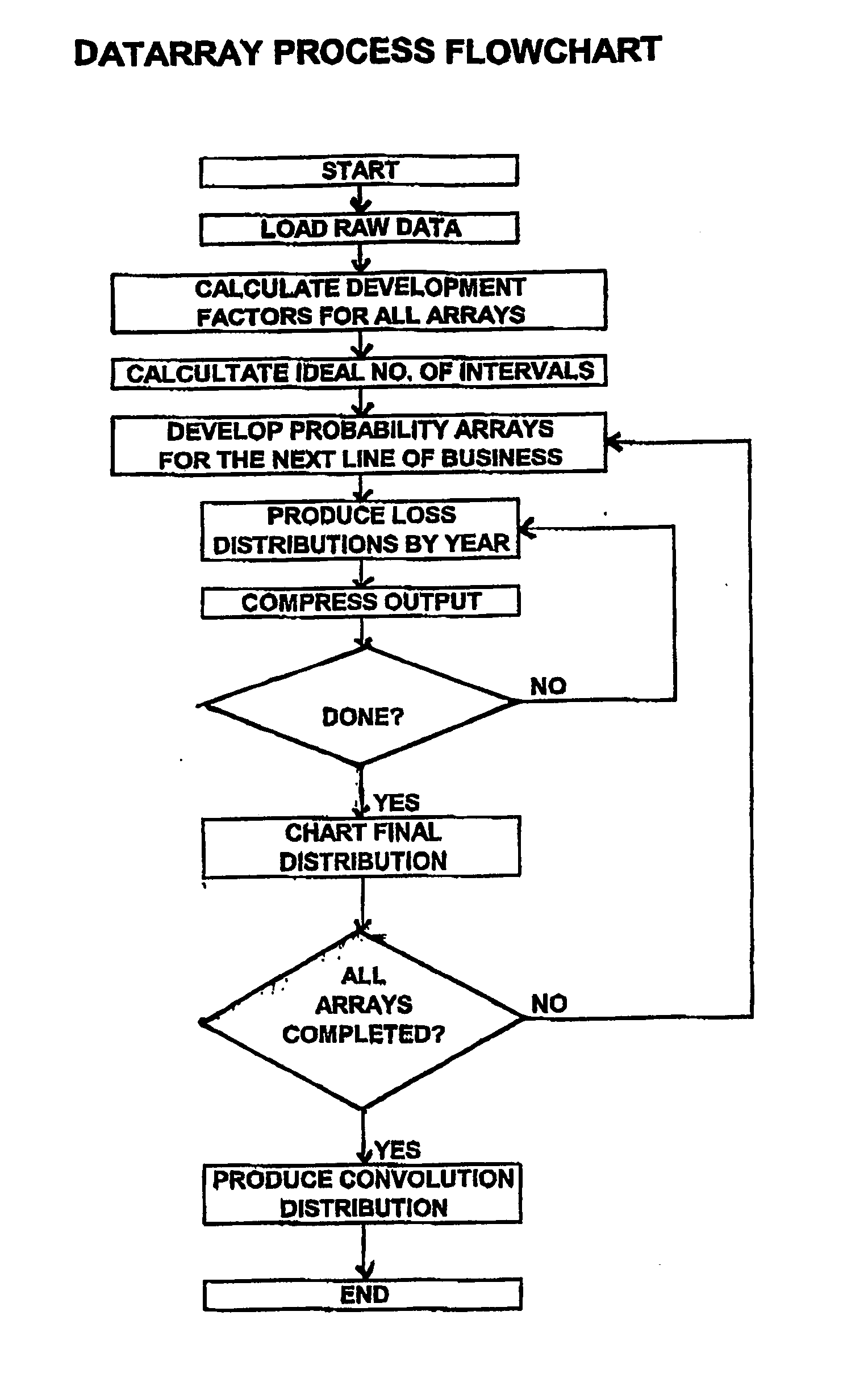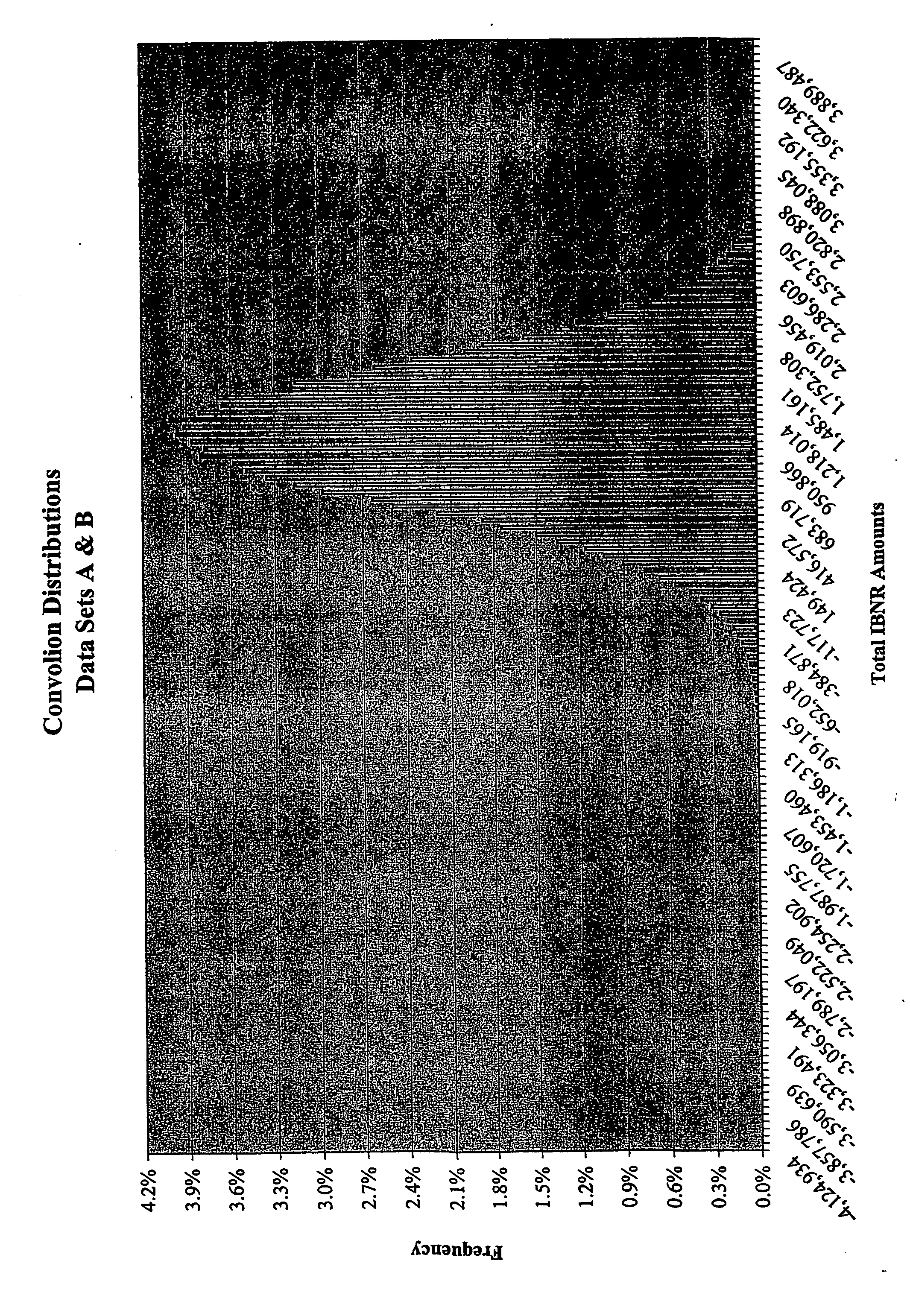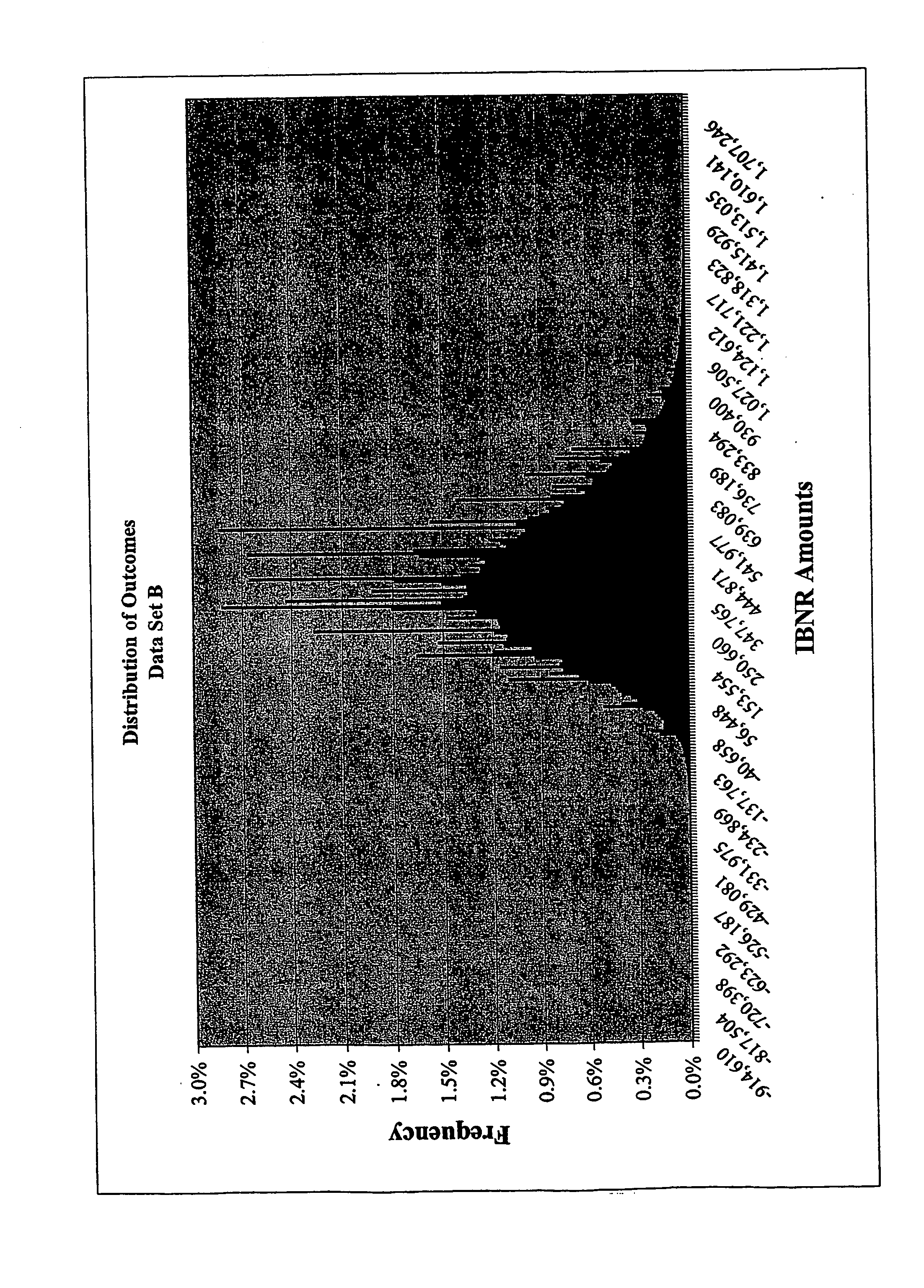Method and apparatus for reserve measurement
a technology of reserve measurement and method, applied in the field of method and apparatus for reserve measurement, can solve the problems of unexplored subject of assessing the reasonableness of such estimates (via the identification of historically based benchmarks), the inability to calculate all possible outcomes, and the inability to meet the requirements of the calculation process
- Summary
- Abstract
- Description
- Claims
- Application Information
AI Technical Summary
Benefits of technology
Problems solved by technology
Method used
Image
Examples
Embodiment Construction
. This is the basic program that produces Tables C and D for Data Sets A and B.
[0024] APPENDIX B. This is the convolution program that takes Tables C and D and combines them into Table E and Drawing 3A.
BEST MODE(S) FOR CARRYING OUT THE INVENTION
[0025] In a preferred embodiment, a process for calculating distribution outcomes is provided. This process can be implemented, for example, by a computer program, by electronic hardware specifically designed to execute the process or software implementing the process, by a microprocessor storing firmware instructions designed to cause computer hardware to carry out the process, or by any other combination or hybrid of hardware and software. The process can also be embodied in a computer readable medium that can be executed by computer hardware or software to implement the disclosed process.
Assumptions
[0026] A. It is assumed that data will be provided for a number of lines of business K. Thus K=1, 2, 3, . . . , k, . . . , K−2,K−1,K.
[0027...
PUM
 Login to View More
Login to View More Abstract
Description
Claims
Application Information
 Login to View More
Login to View More - R&D
- Intellectual Property
- Life Sciences
- Materials
- Tech Scout
- Unparalleled Data Quality
- Higher Quality Content
- 60% Fewer Hallucinations
Browse by: Latest US Patents, China's latest patents, Technical Efficacy Thesaurus, Application Domain, Technology Topic, Popular Technical Reports.
© 2025 PatSnap. All rights reserved.Legal|Privacy policy|Modern Slavery Act Transparency Statement|Sitemap|About US| Contact US: help@patsnap.com



